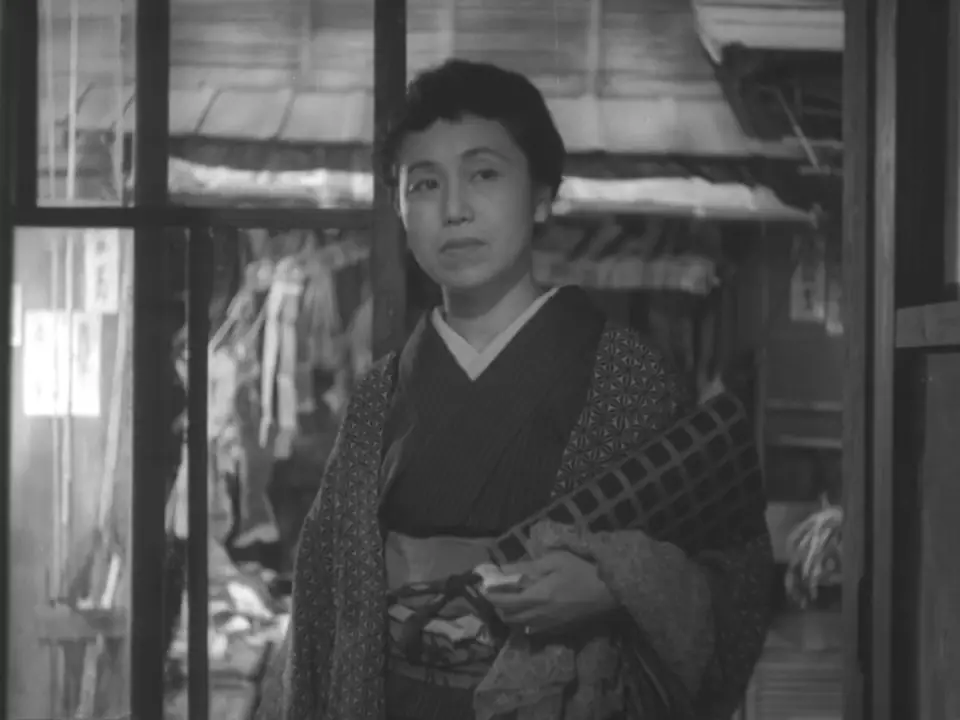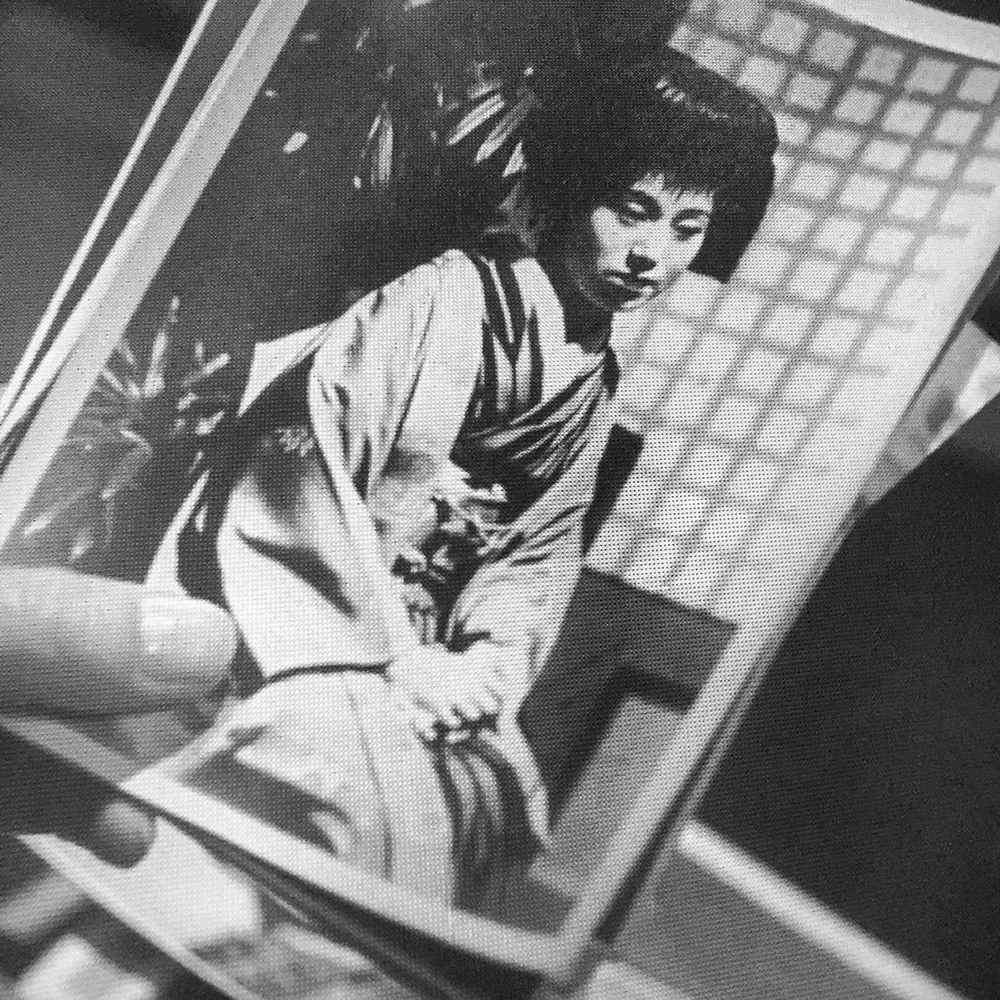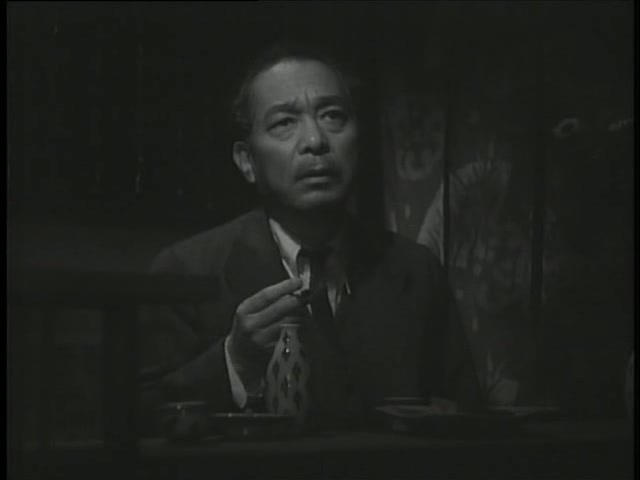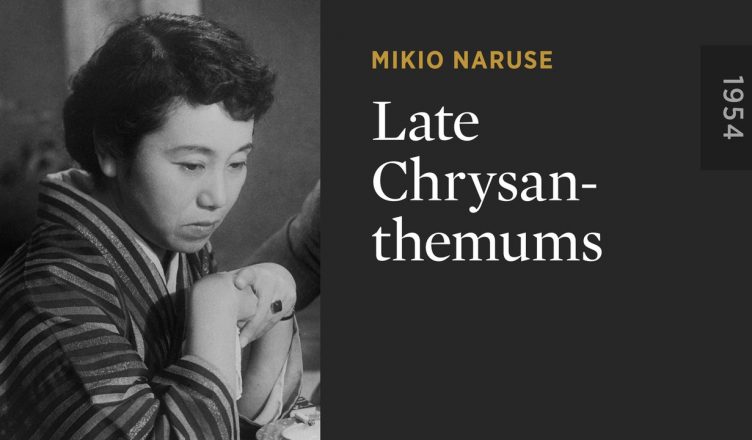Late Chrysanthemums (晩菊, Bangiku)
Director: Naruse Mikio
Country: Japan
Year: 1954
Watch the film on Criterion Channel
It’s always interesting to watch classic movies because they give a snapshot of history–of a time and place that will never look or be the same again. This is true of Naruse Mikio’s films, melodramas or shoshimin-eiga, which were extremely popular with post-World War II Japanese women. In the 50s, his films captured the cultural shift of women as they began to enter the workforce and not be solely responsible for domestic duties. Even though modern women had the same equal rights as men and were free to put themselves first, pursue careers, and be economically independent, public perception was that women needed to continue working in the home. Naruse Mikio’s classic Late Chrysanthemums (1954), captures the dichotomies of expectations for women and sets up the premise that no good will come from being a modern Japanese woman.

Naruse uses a simple soap operatic style to highlight why women should not have the same rights as men. The film follows the interconnected lives of 4 women: Nobu, a married bar owner, Tomi and Tamae, both unmarried women who have children, and Kin, a money lender and real estate agent, as well as the landlord to the other three women. The women had known each other before the war and a few of them were ex-geishas. Although the women live and work in the same neighborhood, they are not friends and none of them is happy in their personal lives.

One portrayal of a modern woman is shown in Kin because she is a woman of means, has financial independence, owns real estate, and has achieved her goals without being married. She relentlessly dogs Nobu, Tomi, and Tamae for their rents and the three women talk about Kin behind her back. In one scene, after Kin has gotten the rent from Nobu, Nobu shares that she would like to have children. Kin says, “Aren’t you too old?” Though Nobu smarts at the comment, she recovers, and when Kin leaves the bar, Nobu snidely comments, “I know what she used to do. She manipulated men for money.” Even though Kin is financially prosperous, she is punished for being modern by not having female friends.
Being a modern woman also means that Kin spends her days without intimate male companionship. She speaks to her business partner, Itaya, in rough and direct tones. She upbraids Seki, a former lover who had tried to murder her, and also tries to borrow money from her. In another instance, the man she’s looking forward to seeing, a soldier named Tabe, is not actually interested in being with her but only wants to get a loan. Kin may have the economic means and independence that epitomizes being a modern Japanese woman, but being modern means having no male companionship.

Just as modern women are damned for being independent, Naruse doesn’t let them off the hook when they are married. For example, Nobu has also chosen to be a modern woman by owning her own business with her husband, but their roles are reversed with the husband constantly fetching tea and beer for guests while Nobu bosses him around and emasculates him in front of others. Rather than praise and ask her husband for guidance, she is bossy and ill-tempered with him. He responds by longingly looking at and commenting on the good looks of other women. According to Naruse, modernism may give women rights, but even if they have husbands, they will not have joy in their married lives.
Then there’s Tomi and Tamae, 2 women who are poor and did not ask to be modern women. They both work low paying jobs, which has increased rather than decreased their anxieties about life. Whereas Tomi sells cigarettes on the black market, gambles, and drinks excessively, Tamae lies around all day on her tatami mat, barely able to rise each day to do menial work. Both women’s twenty-something children, products of modernity and the cultural shift towards individualism, completely slough off the traditional mode of respecting and obeying their aging parents. Both children pursue their own individual mandates–a mandate that had been frowned down upon in the past. According to Naruse, whether a woman chooses to be modern or not, she is doomed to a life of misery and unease.
I’ve seen the film several times and I am always struck by how well Naruse uses a simplistic melodramatic narrative style to blatantly comment on how modernity makes Japanese women from every walk of life lose their femininity. I think Japanese women in post-War Japan liked Naruse’s films because he was the only filmmaker who showed ordinary women doing ordinary things while experiencing the hypocrisy of having equal rights. For me, his somewhat negative portrayal of modern women is not a surprise since he was a male and had been making films since the 30s. Like other men, Naruse would have been directly impacted by Japanese women having equal rights, and he would have been forced to adhere to the new rules of modernization. Watch Late Chrysanthemums and you will be reminded that in post-War Japan, women were forced to deal with the cultural repercussions and backlash of having equal rights, whether they chose to be modern or not.
- Late Chrysanthemums - August 20, 2019
